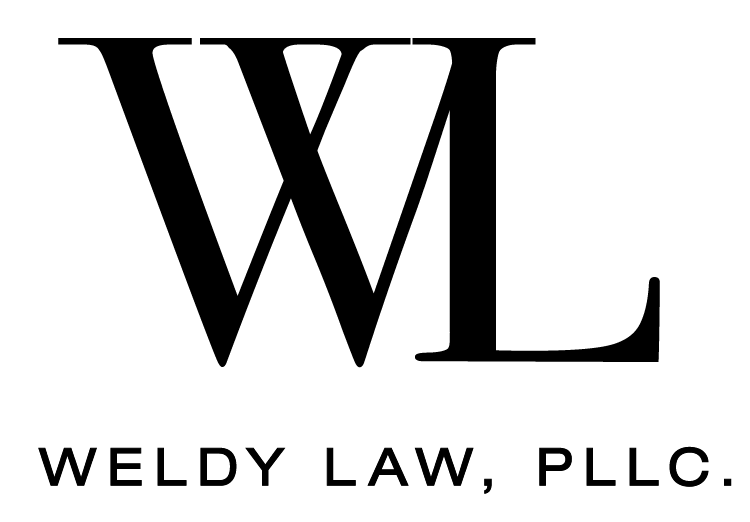Blog Post
For every married couple, divorce is a possibility, although a remote one, hopefully. Divorce can interrupt an individual’s estate plan, retirement plans, or business interests. Here are a few things to keep in mind if you are considering divorce.
Divorce and Wills
During the divorce process, the last thought on anyone’s mind is what would happen if they unexpectedly die or become extremely ill. Most people are surprised to learn that the soon-to-be ex-spouse retains legal authority to make medical decisions for you until the divorce is finalized. Your parents or siblings would need to petition a court to obtain those legal rights.
Additionally, if you die before your divorce is finalized, the divorce action will be dismissed and the executor determinations of your will move in place as part of the action design of your Estate Plan. In this scenario, now your surviving spouse has control over your estate and assets. Updating your Estate Plan immediately following a divorce is crucial, but even more proactively consider addressing these potential issues on the onset of an impending divorce.
Divorce and Business
Another mistake some people make is assuming any business interest or asset they have built on their own while married is theirs solely when they divorce. The general rule in community property states like Texas is that each party owns half the assets accumulated during the marriage. This means your spouse typically owns 50 percent of your business if you used money accrued in the marriage to start the business.
Action Point
At Weldy Law, PLLC, we’ve created business succession plans to address this scenario as well as many others. Our position is to consider all the possibilities and make sure the legacy and financial integrity of our clients remain intact. Death and divorce present obstacles, but Weldy Law, PLLC, is committed to finding workable solutions to these challenges.
The above blog is for informational purposes only and is not legal advice nor does any information or communication with this website create an attorney-client relationship.
As the population in America grows older, it’s becoming common for adult children to be called upon to care for their sick or aging parents. Typically this situation begins with the adult child helping with bills, physician appointments, medication, and/or transportation. Eventually, this can evolve into almost a full-time job of caring for a parent. Despite the life-altering commitment, these adult children make to their parents, occasionally the law stands in the way of the children being able to make quick decisions regarding money or medical decisions for their parent.
Consider this scenario: Sarah is caring for her 90-year-old mother with Dementia. At first, Sarah would have mom sign checks from her account to pay bills and would accompany her to the doctor’s visits. Unfortunately, a bank officer recently found out that Sarah is not on the account and is now refusing to honor checks without speaking to the Mother. Also, the doctor has suggested that Sarah should consider a guardianship over Mom so that Sarah can formally sign a consent to treatment. Sarah wants to help her Mom but is unsure of what to do from here. Sarah wants to consult a lawyer to learn about her rights and how to protect Mom.
If Sarah were to talk with a lawyer, she would learn that the law provides that when most people attain certain ages, they are vested with certain civil rights. For example, when someone turns 18, they become a legal adult for most purposes. So, because the person (in this scenario, Mom), is vested with her own rights including the right to make her own decisions, what happens if she can’t make decisions?
Fortunately, the law provides two solutions:
First, hopefully, Mom had the foresight to visit a lawyer to execute an estate plan that included both a Medical Power of Attorney and a Durable Power of Attorney. In essence, powers of attorney are documents in which a person can appoint someone else, known as an “agent” to make decisions for them if they are unable to do so themselves. A Medical Power of Attorney allows the named agent the legal right to make most medical decisions for someone else and a Durable Power of Attorney is a document which allows the agent the legal right to make financial or property decisions for the principal even if incapacitated. Having these documents is a simple and low-cost way to ensure that you’re protected. If Mom has those documents in place, Sarah may simply present them to the bank and physician and everything should continue running smoothly with Sarah in charge.
An important caveat: Mom would have needed to execute those documents while she was still competent. If she did not, and is no longer competent, that option is off the table, and Sarah will need to consider a legal guardianship.
Second, in Texas, a guardianship proceeding allows an interested person (such as a relative or friend) to petition a court to declare Mom as incapacitated. Generally meaning that Mom is not able to meet her basic needs like food and clothing or the competency to make medical decisions. If Sarah’s mom failed to do any estate planning and obtain the powers of attorney listed above, then Sarah will likely need to resort to guardianship.
The bottom line here – if Mom didn’t execute powers of attorney, a guardianship may be Sarah’s best option to help care for her Mom. Still, Texas favors the least restrictive means on the proposed Ward and generally views guardianships as a very restrictive means of assisting a person.
Without question, caring for an aging or sick parent is one of the most honorable and selfless things you can do. It’s difficult on many levels. If you are the caretaker for an aging or sick person who has lost their capacity, you may consider taking action now to safeguard your continued ability to help them. We can help you ensure that your rights are protected, and you can continue caring for your loved one without interference from anyone else. At Weldy Law, PLLC, we are experienced in planning and can guide you through a simple, cost-effective process to resolve these issues.
The above blog is for informational purposes only and is not legal advice nor does any information or communication with this website create an attorney-client relationship.
The new year and new decade are quickly approaching. As we all prepare for the holidays and a new year, wrapping up any loose ends with your estate plan should remain a priority. Before entering into the new year, here are some task to consider checking off of your end-of-year checklist:
Make Sure Your Estate Planning is Up To Date
Review your estate plan. Have there been significant changes in your life? If so, addressing those changes in your estate plan is prudent. Each year, changes in the state and federal law, lifestyle changes, births and deaths in the family, and location and job changes can all impact your estate plan.
Additionally, consider reviewing the individuals you have appointed to serve as your fiduciaries (successor Trustee, Executor, Agent under a Durable Power of Attorney, Agent under a Medical Power of Attorney, Trust Protector, etc.) are these individuals still able to act on your behalf if the need arises?
Check Your Beneficiary Designations
Another area of estate planning that needs revisiting at the end of the year are your beneficiary designations on any life insurance policies, annuities, and retirement accounts (IRAs, Roth IRAs, 401(k) plans, etc.). If you have previously completed the forms for any of these assets, you may review them to ensure the beneficiary named is still the person(s) you want receiving the assets.
Review Car and Homeowners Insurance Policies
Everyone likes to save money and an easy way to do so is to call you insurance agent. Analyze the coverage you currently have for your home and car to see if you are properly covered and to see if there are any additional savings available to you. Sometimes, you can save money by having more than one policy through an insurer.
Review Your Paycheck Withholdings
When it comes to your 401(k), IRA, and Health Savings Account, the federal government allows you to contribute a maximum amount per year pre-tax. As we approach the end of the year, it is a good idea to review how much you have contributed and see if you are able to give more. Because this is done pre-tax, it is a nice way to future needs.
Of course, this isn’t an exhaustive list of tasks you may consider completing as the end of the year nears, but it is a starting point. If you have any estate planning questions, Weldy Law, PLLC is here to help, contact our offices to schedule a consultation.
The above blog is for informational purposes only and is not legal advice nor does any information or communication with this website create an attorney-client relationship.
This is the final installment of our III part blog series discussing Special Needs Trusts.
Before implementing a SNT, you should consider whether the trust is necessary. A SNT is not always necessary or the right answer. The cost of establishing and funding a “typical” SNT frequently ranges from $5,000 to $10,000 or more depending on the type of SNT established and whether or not there is Court involvement. Thereafter, the trust will incur administration expenses, including Trustee’s fees, administration fees, investment fees, and tax return preparation fees. These costs may be disproportionate in relation to the amount in value in question. These set-up and administration costs may be unnecessary if the beneficiary does not currently receive governmental benefits and is not anticipated to need SSI, Medicaid or public housing in the future.
A few alternatives to the establishment of Self-Settled SNT are compiled in the following paragraphs. An individual may purchase exempt resources, such as motor vehicle or home, pay off debt, including mortgages and credit card debt, prepay bills, purchase a pre-need funeral plan or give up needs- based benefits and rely on the individual’s resources, income and non-needs-based benefits. While giving up needs-based governmental benefits is generally not a good solution, if the amount of funds available to the beneficiary is relatively small, it might make better financial sense to spend down the funds on items that the beneficiary currently needs, rather than incur the expense of establishing a trust.
If a third-party SNT is being considered, there are fewer options available to ensure that the needs of the beneficiary are met. One alternative is disinheritance. This strategy was frequently used prior to the advent of SNTs however, it is not commonly used today. Another alternative is to make a gift to a third party under a moral obligation to assist the person with a disability. This strategy is not recommended since it leaves the disabled person at risk.
A tool that can be used in lieu of either a self-settled or third-party SNT is an ABLE account. ABLE (Achieving a Better Life Experience) Accounts allow an individual and her family to set aside up to $15,000 per year (in 2019). Unlike a special needs trust, an ABLE account can be used directly by the beneficiary. In order to be eligible to use an ABLE account, a beneficiary must be disabled within Social Security standards and must have become disabled prior to age 26.
If you would like to learn more about Special Needs Trusts, contact Weldy Law, PLLC, for a free initial consultation.
This blog is for informational purposes and does not provide legal counsel nor does it establish an attorney-client relationship.
This is part II of our III part blog series discussing Special Needs Trusts.
Self-Settled Special Needs Trusts
To provide for the payment of supplemental needs, federal law permits an individual with disabilities to retain his or her resources in one of two types of Special Needs Trusts (SNTs). Without the creation of such trust, the resources would count as an asset of the individual, disqualifying him or her from SSI or Medicaid benefits.The two types of trusts are commonly referred to as (d)(4)(A) and (d)(4)(C) SNTs. These two types of SNTs are self-settled or first-party SNT trusts, meaning that these trusts are funded with the beneficiary’s own funds. A Self-Settled SNT is a trust created (and funded) for the sole benefit of an individual with a disability under the age of 65 by the individual, by the individual’s parent, grandparent or legal guardian, or by a court.The trust is funded with the disabled person’s assets. The trust must provide that the state Medicaid agency will receive amounts remaining in the trust upon the individual’s death up to the amount paid by each state under the Medicaid program for services to the disabled individual.
Pooled Special Needs Trust
A Pooled SNT is a pooled trust created and managed by a nonprofit organization, such as the Arc of Texas. A separate subaccount is maintained for each beneficiary of the trust, but the assets are pooled for investment and management purposes. The subaccount is created for the sole benefit of an individual with a disability by the individual’s parent, grandparent, legal guardian, court, or the individual. The trust is funded with the disabled person’s assets.
Third-Party Settled Special Needs Trusts
A third-party SNT is a special needs trust created and funded with the assets of a person other than the disabled beneficiary. As part of their estate planning, parents, grandparents, or other family and non-family members frequently create and fund third-party SNTs for the benefit of their beneficiaries who have disabilities. The third-party SNT affords the parents, grandparents, or family or friends, the opportunity to preserve the beneficiary’s public benefits and to supplement those benefits. In addition, third-party SNTs provide for the proper management of the gift to the beneficiary with disabilities for the beneficiary’s entire lifetime. At the beneficiary’s death, the property can pass as designated in the will or trust agreement or by exercise of a testamentary non- general power of appointment.
If parents, grandparents or friends execute a third-party SNT, they can designate the Trustee of the SNT as the beneficiary of life insurance policies, annuities, or as a payable-on death (POD) or transfer-on-death (TOD) recipient of bank and brokerage accounts. The parents or grandparents may prepare a letter of intent that details their intentions and desires for the disabled beneficiary’s future.
Differences Between Self-Settled Special Needs Trust and Third-Party Special Needs Trusts
A self-settled SNT differs from third-party SNT in that a self-settled SNT contains the resources of an individual with disabilities, and therefore must contain a mandatory Medicaid payback provision. A third-party SNT can be created by a revocable inter vivos trust agreement, an irrevocable inter vivos trust agreement, or a Will. Generally, a separate inter vivos trust agreement is used to allow other family members (and friends) to use the third party SNT in their estate plans. A Self-Settled SNT must be created by an irrevocable inter vivos trust agreement.
We will have our next installment in this blog series posted soon. In the meantime, if you would like to learn more about Special Needs Trusts, contact Weldy Law, PLLC, for a free initial consultation.
This blog is for informational purposes and does not provide legal counsel nor does it establish an attorney-client relationship.


